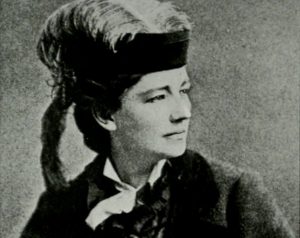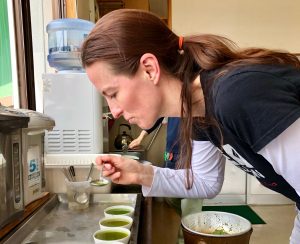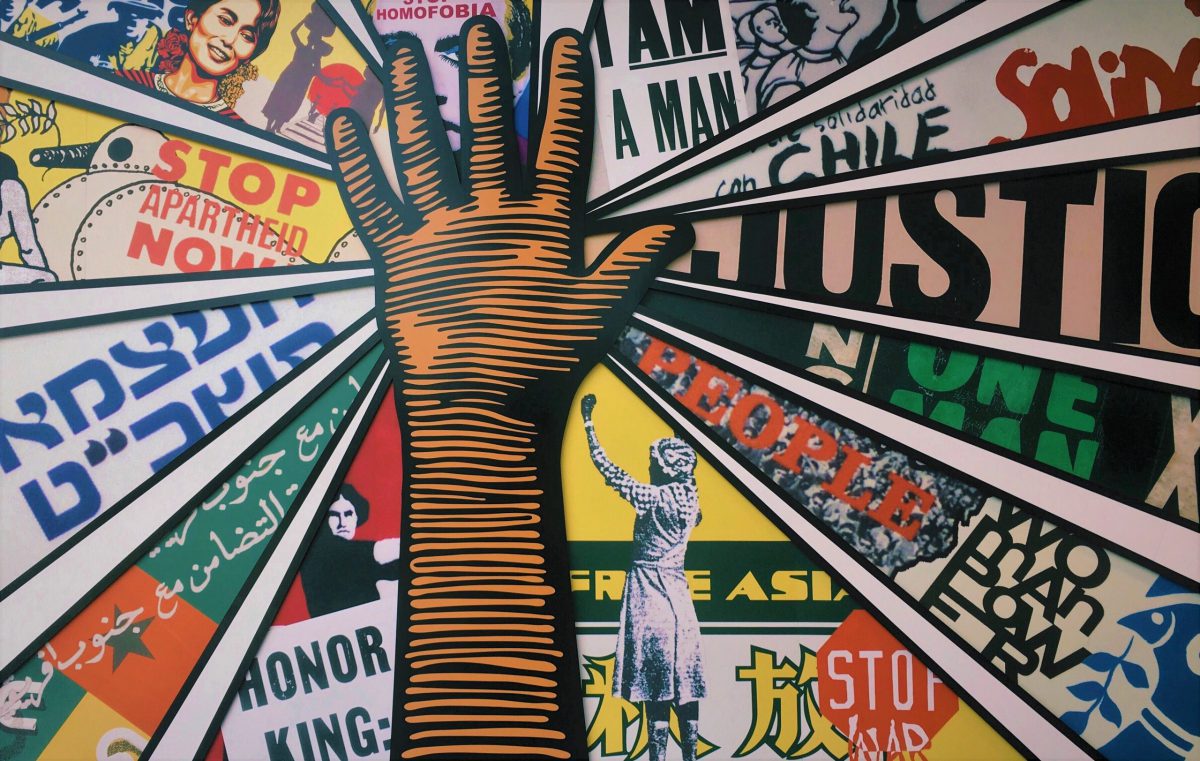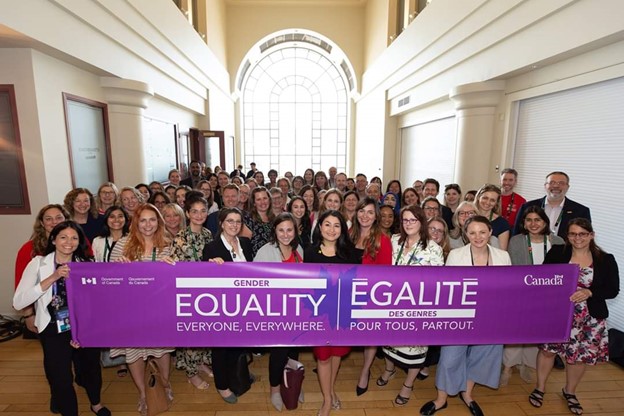
Leah Sarah Peer, a 3rd year, 26-year-old Montreal medical student and founder of the Peer Medical Foundation (PMF), a fledgling nonprofit that helps folx navigate the Canadian healthcare system, explains the meaning of her necklace: A Swarovski crystal pendant in the shape of a black swan hanging on a lightweight silver chain. Peer says “When I wear this necklace, I think about a swan who is constantly surveying and navigating a lake, having to face challenges, and overcoming obstacles generated by nature. It inspires me to work hard to make a difference while I am on this planet.”
Peer also knows that black swans are rare birds, famously othered in fables, whose survival depends on being part of a larger flock.
So, when Peer heard of The Equal Futures Network (Network), a new pan Canadian initiative designed to connect, amplify, spotlight organizations working to achieve gender equality—she immediately signed up. As did over 488 other organizations – in just over a year.
Network is now arguably Canada’s largest ‘come one come all’ feminist organization since the creation of The National Acton Committee on the Status of Women (NAC), a powerful 700+ network of women’s rights launched in 1971 which served at the forefront of fights for rights for over 30 years.
But to what end?
Is this just about flocking together? Or something bigger?
Julia Anderson, Chief Executive Officer for the Canadian Partnership for Women and Children’s Health CanWaCH, home of the Network initiative, believes the it has incredible change making potential.
“If we want to improve the lives of the most marginalized women, children and adolescents, anyone marginalized due to gender, protect their health and rights, we need to work together.”
Taking a ‘big tent’ approach, Anderson says any organization, business or nonprofit, big or small, working to advance gender equity and equality is welcome to join. Its diverse member list includes the Canadian Women’s Chamber of Commerce, Next Gen Men, Groupe Femmes, Politique et Démocratie, Intersex London Canada, Women of Colour Thrive, Niijkiwendidaa Anishnaabekwewag Services Circle, the Northern Birthwork Collective, New Brunswick Transgender Health Network, Shake Up the Establishment—and Queen’s University.
Presently, over 32% of members are based in South Western Ontario; an impressive 19.5% are based in Quebec.
The organization is hosting its first network summit in Ottawa on June 8-9th. The Honorable Marci Ien, Minister for Women and Gender Equality and Youth (WAGE), and award-winning, feminist author, Farzana Doctor, and Joanna Griffiths, Founder and CEO Of Knix, are keynote speakers. WAGE contributed $498K in grant funding over 3 years towards the development of the Network in 2021.
THE STATUS OF GENDER EQUALITY IN CANADA
Compared to countries like India, or the United States, especially in this moment, Canada looks like a gender equity mecca. So why fund a new coalition?
The truth is, we too, still have a long way to go.
No matter what international gender equality index you look at, Canada is rarely the top 10. While Canada has moved up the UN Gender Equality Index ranks from #25 in 2015 to #16 in 2021, other countries with self-identified feminist governments like Norway, Ireland, Iceland, Germany, Australia and surprisingly Hong Kong China (SAR), still lead the global gender equality scoreboard. Especially when it comes to gross national income (GNI) per capita which compares how much a woman earns on average in each country. Using a USD based calculation that adjusts for differences in cost of living, the average woman in Norway earns $66, 494/year. A woman in the US earns $63,826. The average woman in Canada earns $48,527 (27-24% less). When an intersectional lens is applied, the earning gap is even greater.
Pay equity, despite a new federal law, is still not a reality in many sectors and spaces in Canada. Canada’s women’s entrepreneurship programs, world class and successful on many levels, continues to over privilege a small subset of 200 000+ women entrepreneurs with incorporated, scalable (read largely tech-based) enterprise ideas and dreams leaving the rest (62%), largely sole, self-employed, necessity-driven women entrepreneurs with a reported medium income of $19 999K/gross per year, vastly under supported.
In addition, Canada still has uneven access to abortion procedures—despite legalization. Women only hold 23.4% of corporate board seats as of 2021—a mere 2.2% increase over 2020. Twenty-eight per cent of women-led households struggle with the affordability, suitability or adequacy of their housing. This is almost double the rate of households led by men. Approximately every six days, a woman in Canada is killed by her intimate partner (Statistics Canada, 2019). It costs taxpayers billions of dollars: $7.4 billion to deal with the aftermath of spousal violence alone. Egale, a LGBTQ+ advocacy group, reports 71% of trans people have post-secondary education, but over 50% earn less than $15 000 a year due to gender discrimination.
When we apply an intersectional lens, things are typically worse for racialized , disabled, immigrant women, plus queer and trans folk on every metric examined. According to Census and Statistics Canada Canadian Income Statistics data on average annual earnings: Indigenous women face a 57% gender pay gap, women with disabilities face a 46% gap, immigrant women face a 39% gap and racialized women face a 32% gap.
That said, there has been watershed progress in just this past year. For example, universal childcare, a 50 year+ body of activist work, is now an implementation- ready policy reality in this country. And, new Canadian polls that show that 90% of Canadians want to see gender equality achieved and that 57% of women (and 40% of men) today identify strongly as feminists, plus a feminist government.
Overall, we have indeed made progress, but progress is still unevenly distributed.
Furthermore, as the recent attack on U.S. Roe v Wade and the implosion of women’s rights in Afghanistan, shows progress unattended, is progress denied. Rights won through hard, decades-long struggle and lives lost easily comes under siege when economic conditions worsen and when political power shifts. Patriarchy is a hydra. Cut one limb off and another one grows in its place. Progress for women, gender equity and social justice requires constant vigilance.
History shows the antidote, is to be and stay organized. At present, we are not. Not like we used to be. And perhaps that, is the piece of the puzzle that keeps us from getting to the top.
THE POWER OF FEMINIST ORGANIZING
In financial circles, Black Swans refer to an unpredictable event or set of forces that suddenly coalesce, rise up and remake the world. An example is Brexit or closer to home, the 2008 financial crisis. One could also argue that the creation of a new pan Canadian feminist coalition could be another.
Does the Network have the potential to be this era’s feminist Black Swan?
Nora Loreto, activist and feminist author, gives it a maybe.
Her concern? In this neoliberal age of individualism, women have excelled at organizing empowerment-oriented networking events but seem to have forgotten how to organize, mobilize and wield political power where and when it really counts.
In her book, Take Back the Fight, Loreto argues we have lost ground as a result and believes the key to avoid further backsliding is to re-skill, fund, and build large diverse feminist coalitions capable of both defending and moving gender equity and rights forward. Loreto sees the emergence of the Network as a positive step forward. But will wait to see if this network has a required political spine.
Reinforcing the importance of organizing for political power, Alicia Garza, co-founder of Black Lives Matter (US) and author of The Purpose of Power, writes, “Most people when they think about power are actually envisioning empowerment. Those things are related, but different. Unless empowerment is transformed into power, not much will change about our environments.”
CanWaCH/Network understands the need for and power of organizing, having served as coalition for change builders since its inception.
INSIDE EQUAL FUTURES NETWORK – WHO ARE THEY? WHAT DO THEY WANT?
Simply, the Network is a project of the CanWaCH organization. But few women’s organizations outside of the health space know anything about CanWaCh.
How did a small, international, women’s health nonprofit based in Peterborough become the lead, pan-Canadian convener, a cross sector, all-call gender equality initiative?
For starters, this modest, 17-person, pan Canadian virtual organization has quite an impressive big-dog-in-the-park track record. Their achievements include:
- Serving as the driving force behind a $14 billion-dollar Canadian initiative to deliver and advance reproductive, maternal, child healthcare rights around the world.
- Playing the role of lead mobilizer and convener for Canada’s participation in Women Deliver 2019, a huge, bi-annual, global conference which attracted 2500 organizations, 8000 in person attendees and another 200 000 participants online to Vancouver; It was the first time the now 12 year-old-event was ever held in Canada.
- In 2021, CanWaCH played a leading role in the development of a Foreign Policy by Canadians which involved convening and working with over 400 people. One of the recommendations was that Canada needs to do more to on the home front. Anderson says, you can’t just advocate elsewhere, “You also need to be addressing the roots of inequality where you are in your own backyard.” Plus, if we want other countries to advance women, they must see it, to be it.
“We have demonstrated we have the skill and experience” says Anderson, who has been involved in membership and coalition-based organizations her entire career. “We are also good at attracting resources. We figured that if we managed to create a track record of success internationally, why not leverage our capabilities domestically.”
Is this another association?
On that, Anderson is crystal clear. “No. We don’t serve the membership; we serve the impact.”
CanWaCH, as the host organization is taking a “leaderful” approach to this project. Which essentially means they don’t see themselves as out in front (traditional leadership), or stepping aside (servant leadership). Instead, they plan to work within, collaboratively, compassionately, trust the process and support network members. The only guard rails are the projects stated values and desired outcome–more gender equality.
BIRDS OF A FEATHER?
Can anyone join? The answer is: The Network “defaults to inclusion”. Any organization, anywhere on their feminist journey will be welcomed as members as long as they are aligned with stated core values which include: A commitment to intersectional feminism, listening, learning, using power, privilege to challenge oppressive norms and systems, working to advance decolonization and overall, move mountains and help smash the patriarchy.
This means larger pro-capitalism women in business networks who rarely, if ever, show up at a protest with organizationally identified placards will find themselves shoulder to shoulder with grassroots, Marxist feminists who actually organize them -without pay.
However, organizations we spoke to were excited to be rubbing elbows with each other, no matter what their political stance.
TWO NEW EFN MEMBER ORGANIZATIONS
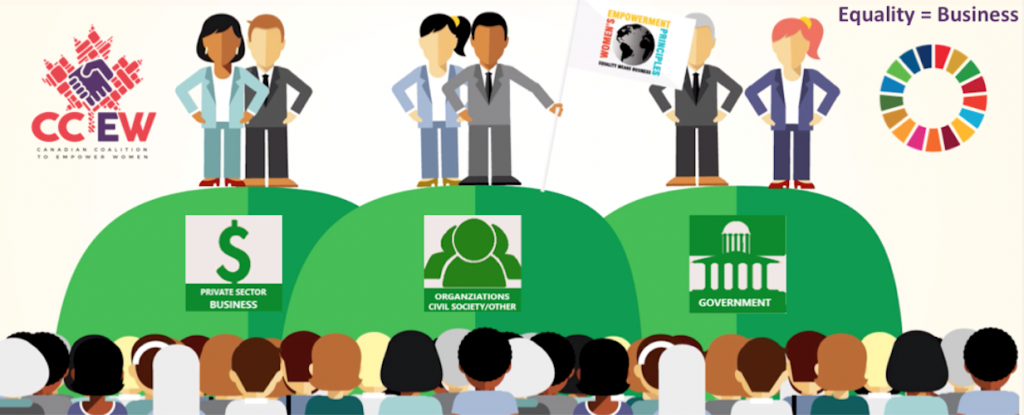
The Canadian Coalition to Empower Women (CCEW) was founded by The Canadian Federation of Business and Professional Women (BPW)—a group that has been operating in Canada for 90+ years (read Colonial times) as a founding member of the International Federation of Business and Professional Women International. Both the CCEW and the BPW recently signed on to the Network.
Co-founder and Project Liaison to coalition’s latest venture, the IDEAS4GenderEquality Project, Sheila Crook says, “When we saw the Network, we said this is an organization we need to connect with. It’s an opportunity to see who’s out there and what they are up to.” Crook was impressed by the organizational diversity of network members—everything from business to civil society, nonprofit, university and union organizations.”
Crook adds “For me, the Network’s existence and uptake acknowledge the fact that there are thousands of organizations in Canada working to advance gender equity in one way or another. This network will open the door, help us build bridges of understanding and form partnerships that can drive real, systemic change.”
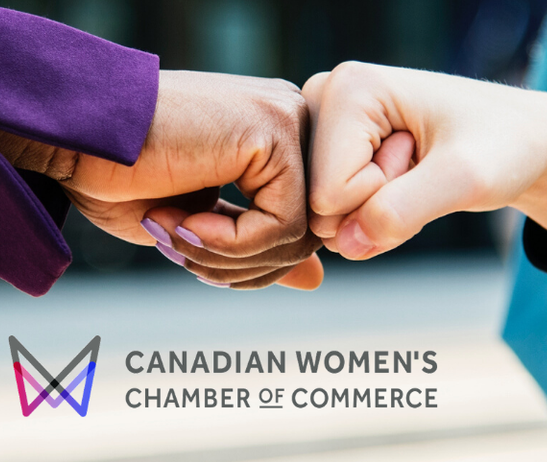
The Canadian Women’s Chamber of Commerce’s Executive Director, Nancy Wilson, agrees. “We recently joined the Network network as well. We represent and advocate for equity for women entrepreneurs, particularly those who operate micro-enterprises or are precariously self-employed. We see this network as a chance to learn and add our weight to any initiative that works to improve gender equity in Canada.”
Wilson and several members of her team will also be attending the June conference.

IS THIS THE BLACK SWAN EVENT WE’VE BEEN WAITING FOR?
Frankly, it’s too early to tell.
Critics of efforts like this talk about the challenges associated with bringing diverse viewpoints and agendas together in hopes of chiseling the mess down into a tower of power scale political force. All too often, political differences, histories, egos, cancel culture tactics and lack of resources to participate fully in a big coalition for small organizations undermines the intent: The collaboration tax is real. Systems-generated trauma, often the source of unintended harm and disagreement, is also real. Fostering a true “I have your back; you have mine” sense of solidarity comes with the opportunity to battle-test each other over time-and survive. In other words, it’s slow and messy.
However, right now, Network members seem unified and enthusiastic in their belief that when birds of a feather flock together, good things will happen.
However, critics say that in order truly dismantle the gender oppression and marginalization mountain, Network members will need to do much more than party once in a while like its 2019 in a big tent.
Black Swan events are known in financial circles for being unanticipated and having gale force impact.
Black swans in nature are also known for having the longest neck, among other species of swans.
Let’s see how far this diverse coalition is willing to stick its neck out to help Canada leap forward and achieve true gender equity and equality – once, and for all time.
Related Reading

The Nuffers Are Coming!
What if ordinary women entrepreneurs started a rebellion? And why would they?

Has Feminist Organizing Stalled?
An author argues that feminism needs coordinated leadership.

The Revolutionary
adrienne maree brown, activist, author, black feminist changemaker and truly funny womxn causes a welcome ruckus –again.





